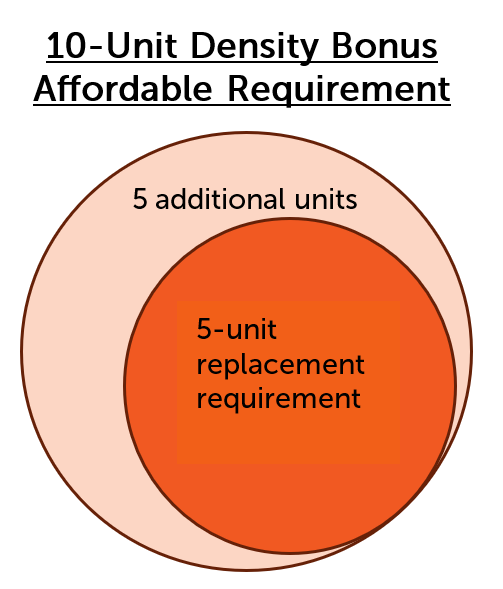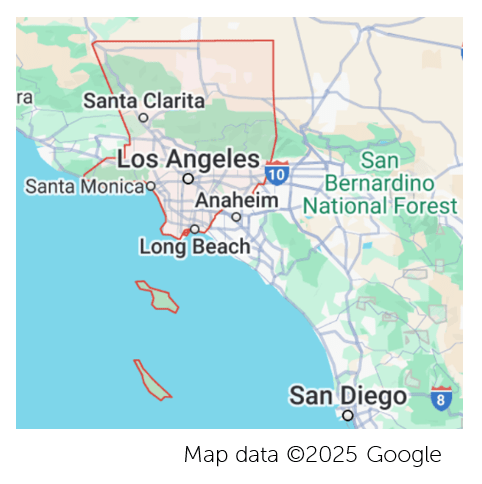
Creatively Preserving Naturally Occurring Affordable Housing Through a Density Bonus
The largest stock of affordable housing is naturally occurring affordable housing (NOAH), that which is affordable to moderate- or lower-income people with no federal, state, or local government subsidy or voucher. As rental prices across the country continue to rise at increasing rates, the number of available rental homes for moderate and low-income renters continues to decline. NOAH properties are especially at risk as there are no affordability covenants that limit the amount of rent that an owner can charge. Properties at risk of losing their affordability, and subsequently displacing residents, can preserve a level of affordability through government-subsidized restrictionsi. Others may lose their affordability, and are either directly converted to market rate housing or redeveloped into higher density market rate. While providing increased supply, the redevelopment of NOAH properties without any intervention limits the ability to preserve affordability. However, one creative policy addresses this dichotomy effectively: a density bonus as a preservation tool. Here, a density bonus is used to both preserve the existing number of affordable units while simultaneously encouraging increased supply of housing.
Using a Density Bonus for Preservation
A density bonus is a government incentive that awards an increase in the allowable size of a building through an increase in floor area ratio or building height. Often, a density bonus is offered to housing developers in exchange for meeting a jurisdiction’s policy goals, such as increased affordable housing. Both Arlington County, Virginia, and Los Angeles County, California, have used density bonuses as a preservation tool. Both counties have adopted a ‘no-net-loss’ approach, which requires a one-for-one replacement of existing NOAH. When NOAH properties are demolished to make way for new development, Arlington County and Los Angeles County award density bonuses, allowing the developer to build more units than they are allowed by right, in exchange for preserving the same number of original NOAH units that were demolished. In addition to this replacement requirement, each county also awards developers additional density bonuses if a certain number of units are set aside and designated as affordable. The one-for-one replacement units can count towards the set-aside requirement, instead of requiring a set-aside on top of the replacement requirement. This allows for the preservation of affordable units from the replacement requirement to also contribute to the development of more affordable units. This unique concept is illustrated below.

Take, for example, a developer who demolishes a 5-unit affordable building to construct a 100-unit buildingii. A county with a no-net-loss policy will require the developer to replace the demolished five affordable units. In addition, the county may offer a density bonus, allowing the developer to build a larger 100-unit building than available by-right. In exchange, the county requires that 10 percent of the units in the new building (10 units) be designated as affordable. However, rather than requiring 15 affordable units in the 100-unit building, the five units replaced can count towards the density bonus requirement, only requiring an additional five units for 10 affordable units.
The idea behind a policy like this is to ensure that, at the very least, affordable units are not lost once demolished. Additionally, the density bonus ensures that, alongside this preservation, additional affordable units are also constructed, thus preserving existing affordable housing while also increasing supply.
Created over three decades apart, the policies in Arlington County and Los Angeles County were formed in response to similar demands for NOAH preservation. They illustrate how two different counties, at very different stages in their development, were able to tailor similar policies to meet their intended needs:
Arlington County’s Special Affordable Housing Protection District (SAHPD) was created in 1990 in response to the potential loss of garden-style apartments in the 1980s and 1990s and applies along two Metro corridors. The future-oriented policy looked to increase both the density and supply of housing along the two Metro corridors, while maintaining affordability. Arlington County did not initially upzone areas along the Metro corridors, therefore limiting the ability to redevelop the existing NOAH apartments by-right. Instead, the County has been able to leverage the density bonus, allowing for increased density in exchange for a portion of affordable units.

Los Angeles County’s Affordable Housing Preservation Ordinance (AHPO) was created in 2021, in conjunction with other County ordinances that encourage affordable housing construction and preservation. In an already dense, high-cost area, a one-for-one affordable unit replacement requirement is much more difficult for developers to adhere to. Acknowledging this, Los Angeles County offers a density bonus as a way of accommodating the replacement requirement ensuring economic feasibility.

Highlighted below are key elements of each policy.
Comparison of Arlington County and Los Angeles County No Net Loss Preservation Policies
| Jurisdiction | Arlington County | Los Angeles County |
|---|---|---|
| Policy Name | Special Affordable Housing Protection District | Affordable Housing Preservation Ordinance |
| Year Created | 1990 | 2021 |
| Preservation Strategy | No-net-loss | No-net-loss |
| Replacement Requirements | 1-for-1 Replacement of either bedrooms, units or floor space | 1-for-1 Replacement of either bedrooms or units |
| Length of Affordability | Covenant to maintain affordability for 30 years | Covenant to maintain affordability in perpetuity |
| Applicable Area | Established along two Metro corridors within Arlington County (3.24 FAR or greater) | Countywide |
| Income Requirements | Applies to NOAH units at 60-80 percent Area Median Income | Applies to NOAH units ranging from 30-80 percent Area Median Income |
| Type of Affordable Housing | Applies to NOAH only | Applies to both NOAH and rent-restricted properties |
| Requirements for Density Bonus | 20-35 percent of all units need to be affordable at 40-80 percent AMI | Density bonus varies greatly; dependent on units' affordability |
| Are off-site replacements allowed? | Yes, but increased affordable unit requirements if off-site nearby (7.5 percent) or elsewhere in the county (10 percent) | Yes, if units have been demolished |
| Affordable Units Replaced through Program to Date | 172 | 39 |
| New Housing Supply Created through Program to Date (total units in development) | 2,561 | 250 |
From 2000-2010, Arlington’s SAHPD successfully replaced and preserved 172 units, or 349 bedrooms of the existing NOAH units, while also increasing supply by a total of 2,561 unitsiii. The program has created over 250 total units, and 17 affordable units created each year. In Los Angeles County, as of 2022, six properties have been a participated in the AHPO. Five very low-income units and 39 low-income units have replaced the 20 NOAH units that were demolished. Additionally, 206 above-moderate income units were created through the density bonusiv.
Conclusion
Preserving existing NOAH units will require jurisdictions to adopt creative tools while continuing to provide critical housing options to thousands of households. Arlington County and Los Angeles County demonstrate the use of a density bonus to both preserve the existing number of NOAH units and increase housing supply. While these policies use the same density bonus strategy to preserve affordable housing, they differ in implementation, meaning that such a policy not only can, but may need to be adapted to the specific geographical, political, and economic situation that they intend to serve.
----------------------------------------------------
Footnotes
iNOAH properties are often preserved through formal affordability restrictions – federal, state, or local government subsidies, or programs that require affordability restrictions in return for much needed capital infusion. This process removes these properties from the NOAH stock, as they are no longer naturally occurring, while maintaining their affordability.
iiThese calculations are a simplified example to help explain the policy. The calculations and requirements used by Arlington and Los Angeles County are similar, but different.
iiiNoting that an insufficient number of bedrooms were replaced in one development because a developer did not comply with the requirement, which resulted in a $1.47 million contribution to the County’s Affordable Housing Investment Fund.
ivData was given to NHT by applicable county governments.